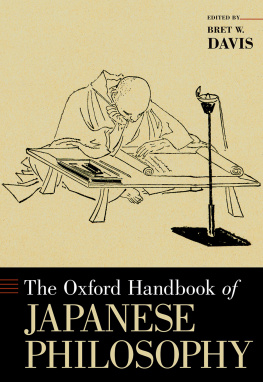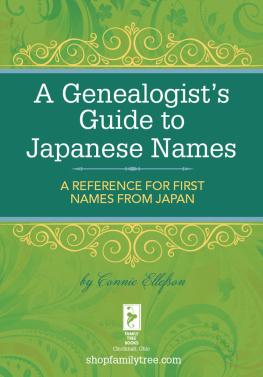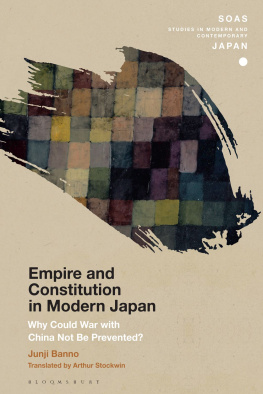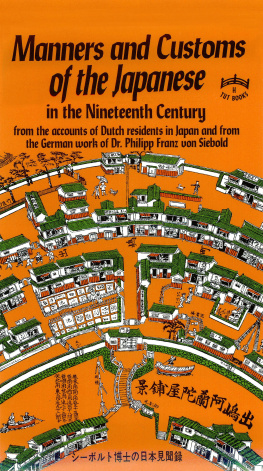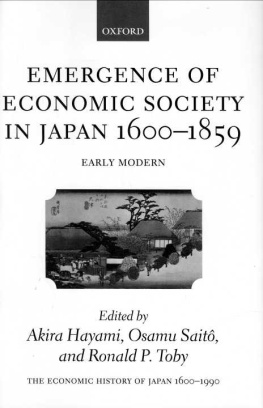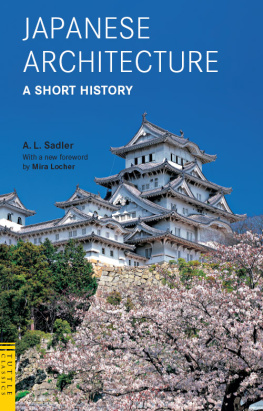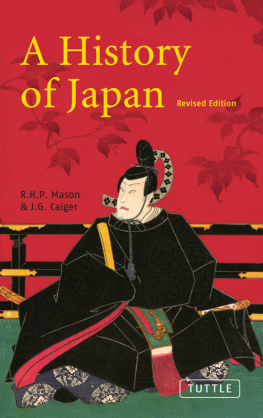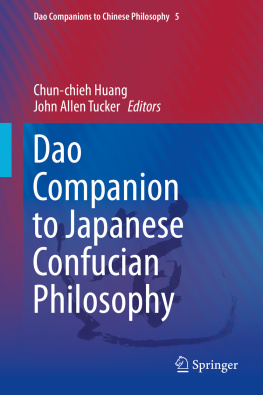Japan Emerging
Japan Emerging
Premodern History to 1850
EDITED BY
Karl F. Friday
IES Abroad Tokyo Center

A MEMBER OF THE PERSEUS BOOKS GROUP
Westview Press was founded in 1975 in Boulder, Colorado, by notable publisher and intellectual Fred Praeger. Westview Press continues to publish scholarly titles and high-quality undergraduate- and graduate-level textbooks in core social science disciplines. With books developed, written, and edited with the needs of serious nonfiction readers, professors, and students in mind, Westview Press honors its long history of publishing books that matter.
Copyright 2012 by Westview Press
Published by Westview Press,
A Member of the Perseus Books Group
All rights reserved. No part of this book may be reproduced in any manner whatsoever without written permission except in the case of brief quotations embodied in critical articles and reviews. For information, address Westview Press, 2465 Central Avenue, Boulder, CO 80301.
Find us on the World Wide Web at www.westviewpress.com.
Every effort has been made to secure required permissions for all text, images, maps, and other art reprinted in this volume.
Westview Press books are available at special discounts for bulk purchases in the United States by corporations, institutions, and other organizations. For more information, please contact the Special Markets Department at the Perseus Books Group, 2300 Chestnut Street, Suite 200, Philadelphia, PA 19103, or call (800) 810-4145, ext. 5000, or e-mail .
Library of Congress Cataloging-in-Publication Data
Japan emerging : premodern history to 1850 / edited by Karl F. Friday.
p. cm.
Includes bibliographical references and index.
ISBN 978-0-8133-4483-6 (pbk. : alk. paper)ISBN 978-0-8133-4561-1 (e-book) 1. JapanHistoryTo 1868. 2. JapanHistoryTo 1868Historiography. 3. JapanCivilizationTo 1868. 4. JapanCivilizationTo 1868Historiography. I. Friday, Karl F.
DS850.J37 2012
952dc23
2011037797
10 9 8 7 6 5 4 3 2 1
For G. Cameron (Cappy) Hurst, III
A pioneer in the field, and
Our mentor, colleague and friend
Contents
LANDMARKS, ERAS, AND
APPELLATION IN JAPANESE HISTORY
Gina L. Barnes
Karl F. Friday
Joan R. Piggott
Andrew Edmund Goble
Mary Elizabeth Berry
Timeline
C. Melvin Aikens
Mark Teeuwen
Gina L. Barnes
Bruce L. Batten
Douglas Fuqua
Timeline
Ross Bender
Mikael S. Adolphson
Mikael S. Adolphson
Robert Borgen and Joseph T. Sorensen
Charlotte von Verschuer
Ethan Segal
Karl F. Friday
Andrew Edmund Goble
Timeline
Ethan Segal
Andrew Edmund Goble
William M. Bodiford
David Eason
Thomas D. Conlan
Linda H. Chance
Hitomi Tonomura
Thomas Keirstead
Ethan Segal
Michael Laver
Timeline
Lee Butler
Philip Brown
Michael Laver
Denis Gainty
David L. Howell
Frank Chance
Barbara Ambros
Anne Walthall
Denis Gainty
Richard Rubinger
FIGURES
TABLE

Scholarship on traditional Japan has grown spectacularly over the past four decades in both sophistication and volume. Historians in Japan have continued to be prolific, while in the West an unprecedented number of researchers specializing in the premodern (preseventeenth century) and early modern (seventeenth to nineteenth century) periods have entered the field. The new scholarship is marked by a shift in methodology from dependence on literary and narrative sources to reliance on documents, archeology, artwork, and other physical evidence of the past; by a shift in focus from the political and cultural history of elites to a broader examination of social structures; and by a reexaminationand rejectiontenet-by-tenet of what was once the received wisdom. As a result, the picture of the Japanese past now taught by specialists differs radically from the one current in the 1960s and early 1970s, when most of the textbooks still currently in use were written.
For early generations of historians, the story of premodern Japan was a quaint, romantic, but mostly inconsequential prelude to the appearanceas the result of thoroughgoing national reinvention in the Western imageof the twentieth-century military and economic superpower that more appropriately commanded scholarly attention. And in this version, the landscape of Japans past was littered with failed regimes and radical breaks with what had gone before.
An emergent tribal confederation was transformedvery nearly at a stroke, in the wake of a spectacular coup dtat in 645into a centralized imperial regime slavishly copied and shaped by reformers in awe of the splendor of Tang China. But this overly ambitious attempt to force Japanese square pegs into Chinese round holes was doomed from the start. Within decades of their inception, the organs and procedures of the system were abandoned as the ruling class became preoccupied with cultural affairs and divorced itself from concerns of governance, particularly outside the capital city. The imperial state was soon naught but a hollow shell: the effete, idyllic court aristocracy lost control over the political and economic life of the nation, while a stalwart and practical warrior class arose and took over the countryside.
In the mid-twelfth century (to continue this scenario), a series of events in the capital at last awakened provincial warriors to the fact that they, not the court nobility, had become the real figures of power in Japan. This discovery culminated in a great civil war and the founding of a new military government (the Kamakura Shogunate), which signaled the demise of the classical age and the onset of the medieval era and a feudal world ruled by warriors. Once loosed, however, the dogs of war were not easily restrained, and, like its European namesake, Japans medieval period was a dark age of chaos and struggle as scores of regional warrior barons contested with one another for power. At last, in 1600, one of these warlords (Tokugawa Ieyasu) triumphed over his rivals and imposed a new countrywide orderbut only by freezing society, stifling change, and hermetically sealing Japan off from contact with the outside worldthat endured until the arrival of American gunboats brought it down in the late nineteenth century.
Next page

